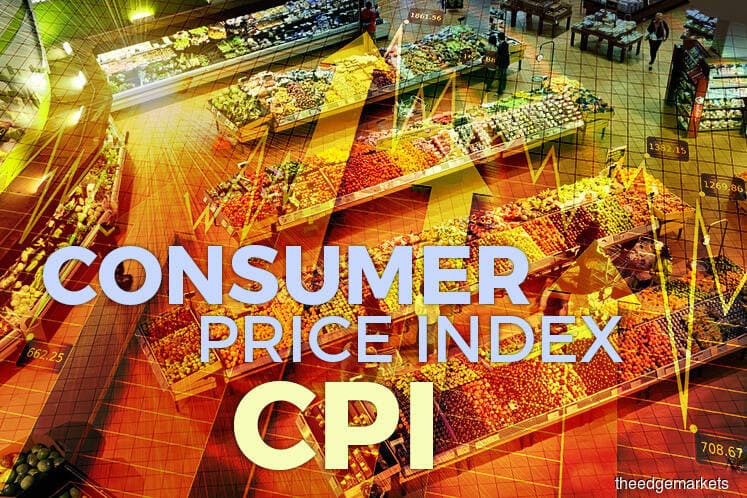
This article first appeared in The Edge Financial Daily on May 24, 2018
KUALA LUMPUR: The Consumer Price Index (CPI), which measures inflation, grew 1.4% year-on-year (y-o-y) in April 2018 on costlier food and non-alcoholic beverages, besides higher expenses at restaurants and hotels.
This was a tad higher than the 1.3% y-o-y recorded in March, although it was unchanged on a month-on-month basis.
The CPI data released by the statistics department yesterday was lower than the 1.6% consensus in surveys by Bloomberg and Reuters.
“This came in line with ours but slightly lower than Bloomberg market consensus (1.6%),” UOB Group senior economist Julia Goh said in a note yesterday.
It also came below Nomura Research’s forecast of 1.6%.
According to Goh, April’s low inflation was partly due to a high base effect as a result of deceleration intensifying from February onwards.
Food and non-alcoholic beverage prices rose at a slower rate of 2.6% in April and transport price increases were modest at 0.4% amid stable fuel prices.
Other key components that rose were alcoholic beverages and tobacco (0.2%), housing and utilities (2%), furnishings and household maintenance (1.8%), health (2.1%), recreation services and culture (0.6%), education (1.1%), restaurants and hotels (2.2%), and miscellaneous goods and services (0.4%).
Commenting on the announcement that the goods and services tax will be zero-rated from June 1 onwards, Goh said preliminary projections suggest that inflation would ease below 1% from August onwards.
She said the extent of moderation will depend on the timing of the sales and services tax and the extent of businesses passing it on to consumers.
“Other initiatives that would further weigh on inflation include fuel subsidies, toll abolishment, and lower broadband prices. But prices would stay sticky should consumer demand remain resilient, cushioned by higher minimum wages and disposable incomes,” Goh said.
However, according to Jameel Ahmad, global head of currency strategy and market research, FXTM, the outlook may change in the near term.
“While the inflation reading announced from Malaysia earlier today (yesterday) continues to suggest that the economy is encountering a period of lower inflation, I see risks that this outlook could change over the coming months,” Jameel said in an email note yesterday.
He said there has been a drastic change in investor appetite towards the US dollar, which has crumpled emerging-market currencies across the globe.
This has also impacted the ringgit, which currently appears to be at risk of falling back towards 4 against the US dollar and is likely to do so, if traders continue to stock up on the greenback, he added.
“As a result of the ringgit weakening, we are likely to see import price pressures increase over the next two to three months and this will consequently result in higher inflation potential.
“The ringgit has not dropped to such an extent that inflation will return to its milestone highs over a year ago, but I don’t expect inflation in Malaysia to remain at its current low level for that much longer, due to the significant shift of investor demand that we have seen for the dollar,” Jameel said.
As for the overnight policy rate (OPR), UOB Group and Nomura believe there will be no more changes to the 3.25% policy rate for the rest of this year.
Nomura, however, noted that there may be downside risks to its forecast gross domestic product growth moderating to 5.5% from 5.9% in 2017 due to policy uncertainty and political transition.
“Financial-imbalance risks are also stabilising, as measured by our proprietary indicator, which should further reduce the need for rate hikes,” said Nomura.